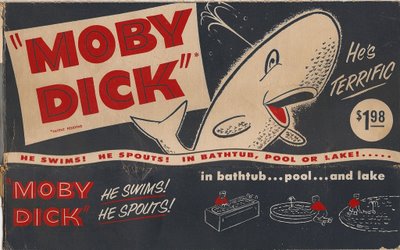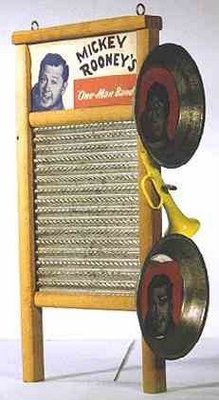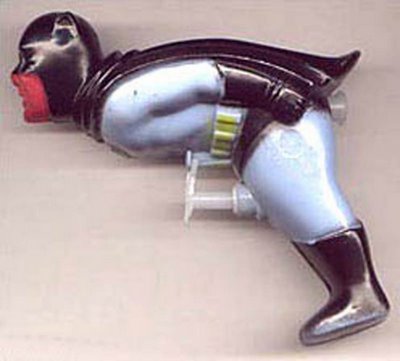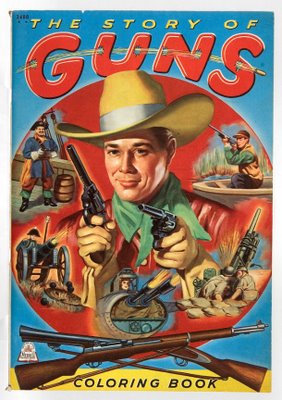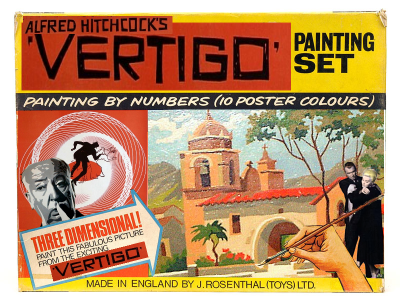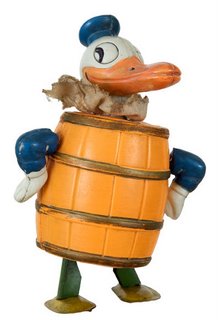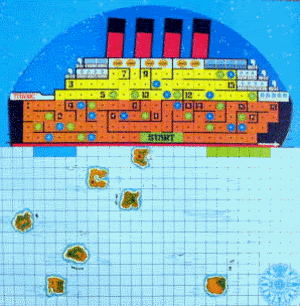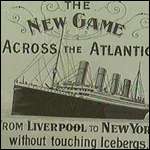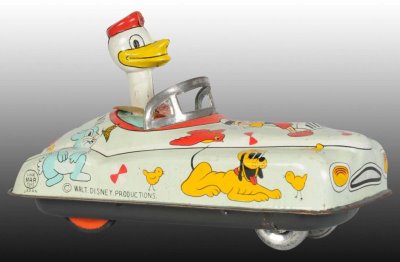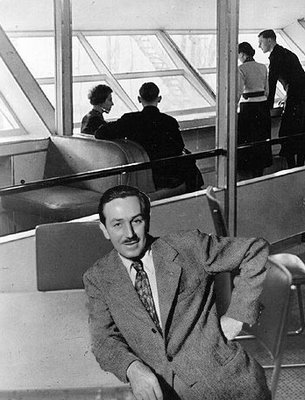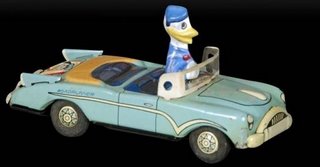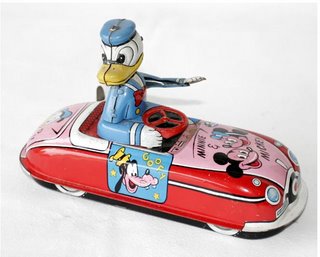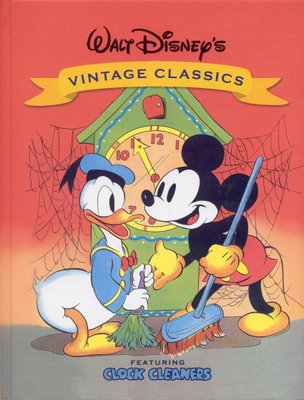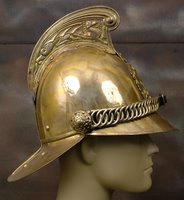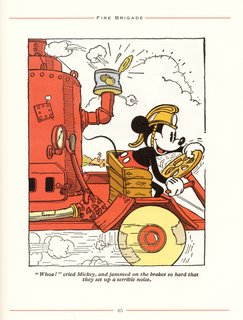 The picture above is an actual frame from the surveillance video of the Brick bank robber. (No, he didn’t use a brick to rob a bank; he robbed a bank last month in Brick, New Jersey). A real robbery; an actual picture; if you recognize the gent with the head bandage, contact Brick Detective James Burgess at (732) 262-1120.
The picture above is an actual frame from the surveillance video of the Brick bank robber. (No, he didn’t use a brick to rob a bank; he robbed a bank last month in Brick, New Jersey). A real robbery; an actual picture; if you recognize the gent with the head bandage, contact Brick Detective James Burgess at (732) 262-1120.
Most likely you won’t be able to recognize the man in the photo. He’s far from the camera. And it’s surveillance video, after all.
But let’s suppose, for a moment, that you and I were watching a dramatic TV show. A team of detectives are watching this video.
One of them shouts out, “Stop it right there! That’s our guy! Zoom in on his face!” There’s a clish-clish-clish-clish sound effect as a series of lines travel across the screen, forming smaller and smaller rectangles. The smallest rectangle flashes a few times, then zooms out full, and we see this:
Another character says, “Don’t you see? He was wearing the head bandage to try to cover up that tattoo of a butterfly above his right eye… but the bandage slipped back! Can we get tighter on that?”
Clish-clish-clish-clish:
 The star of the show says, “Bobby, go through all the mug books and pull out every picture of a guy with a butterfly tattooed over his right eye.”
The star of the show says, “Bobby, go through all the mug books and pull out every picture of a guy with a butterfly tattooed over his right eye.”
OK. Let’s take a deep breath.
Can I see some hands out there? How many of you own a digital camera? Right. Well, presumably, then, you know something about resolution and image size.
In the real world, when you zoom in the first time, you’d get roughly this:
 Looks like Fatty Arbuckle taking a pie. And the second time you enlarge, you get this:
Looks like Fatty Arbuckle taking a pie. And the second time you enlarge, you get this:
 There he is! That’s our man! Bobby, go through all the mug books and pull out every picture of a guy with a mixture of Pantone Cool Gray 8 and Pantone Cool Gray 4 over his right eye!
There he is! That’s our man! Bobby, go through all the mug books and pull out every picture of a guy with a mixture of Pantone Cool Gray 8 and Pantone Cool Gray 4 over his right eye!
We’ll return to picture size and resolution in a moment. First, though…
When you add a Sitemeter to your blog, you learn a little about the people who stop by. Sitemeter tells you how many people are looking at your blog right now, and how many have stopped by in the last hour, day, week, month, and year. There’s no “personally identifiable information, ” but you can see where in the world a visitor is, how many pages that visitor looked at, and how long that visitor stayed.
There are always enough one-second visits to keep anyone humble.
The most useful aspect of Sitemeter data is the clickable list of “referring pages.”
This tells you where people were on the web just before they clicked a link to visit you. So when somebody references or recommends your blog elsewhere on the web, you can easily go there to see what, if anything, the referring page had to say.
When you get lucky, and gain a mention and link on a highly trafficked site, like BoingBoing, for example, (and that happened here once) you instantly see why your numbers spiked. The list of referring pages will likely show the BoingBoing link over and over again. This allows you to a) acknowledge and thank the referring blog or web page, and b) work really hard to make sure your next post is halfway decent, to encourage window shoppers surfing by to stay, perhaps even return.
Guess where the vast majority of visitors to this blog find the link that leads them here?
Google Image Search. I never would have guessed it.
Google Image Search accounts for something like 90 to 95% of all Isn’t Life Terrible visitors.
I have a theory about this.
Want to see the theory illustrated? Click on the picture below, then come back.
 Since Blogger automatically reduces the size of pictures posted to fit the available blog width, clicking on a picture sometimes takes you to a larger version of that same picture. Not the case with the picture above, though, where WYSIWYG.
Since Blogger automatically reduces the size of pictures posted to fit the available blog width, clicking on a picture sometimes takes you to a larger version of that same picture. Not the case with the picture above, though, where WYSIWYG.
Some blogs don’t seem to want you to download and save a picture that’s posted.

 Not terribly friendly or welcoming, is it?
Not terribly friendly or welcoming, is it?
Of course, there can be valid financial reasons to do this – if you created and own the pictures and wish to license them, for example.
But on a blog like this one, there’s no reason to “protect” pictures. (And there’s an excellent way around difficult to download pictures, anyway).
As a matter of fact, since we now know that the majority of people come here looking for images, it would be pretty stupid to make access difficult.
I suddenly realized – and I’m sure all the Search Engine Optimization gurus out there know this – that Google Image Search lists the images it finds more or less in size order, with the largest images often on the first page of results.
So that’s why I keep stumbling into results from my own blog when I go looking for images – the simple fact that I usually post pictures full-size here. I was optimizing my search engine visibility and didn’t even know it.
Maybe this blog will run out of space or bandwidth someday, but in the meantime, the pictures here will usually link to larger versions. For example… click on this one.
 See? I said we’d return to the topic of resolution.
See? I said we’d return to the topic of resolution.
With access to a large file, you can “re-mix” the picture, reframe it, even grab a small detail, as I did here. You can use it. Not commercially, of course, but who knows, maybe you’ll write the definitive appreciation of Pinocchio someday and need an illustration. You could pull ten different pictures out of this one cel-and-original-background set-up, thanks to its size.
Downside? We didn’t even get to say goodbye to all the people with slow connections – they all left a long time ago.
I would be willing to bet that some blogs I love… like John McElwee’s Greenbriar Picture Shows… link to large, high-resolution images just because… well, just because “why wouldn’t you?” After all, Lee Hartsfeld’s Music You (Probably) Won’t Hear Anywhere Else links to complete music files from shellac and vinyl so obscure that Lee could remove the parenthetical modifier any time he wanted to. (And, speaking parenthetically myself, I’d like to thank both of these gentlemen for the Premio Dardo nominations. Lee correctly points out that the chain-letter aspect of these awards could crash Google, but… it’s the thought that counts.)
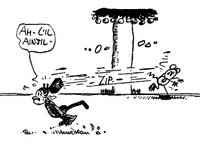 Someday, that bank over in Brick will “up” the file size and resolution of their security cameras and those laughable, infinitely zoomable images currently available only on fictional television shows willing to stretch a point (or pixel) will become a tad less absurd.
Someday, that bank over in Brick will “up” the file size and resolution of their security cameras and those laughable, infinitely zoomable images currently available only on fictional television shows willing to stretch a point (or pixel) will become a tad less absurd.
A few final words after some astonishing, huge, hi-res images of original art from Disney films. Some of the regulars here can probably identify not only the film but also the artist before they click. Probably not for the first one, though…











The final words: please note that all of the non-bank robbery-related pictures in this post came from the listings of Heritage Auction Galleries. They’re all for sale in a upcoming auctions, and all available for viewing in a size and resolution that allows you to savor and appreciate each stroke of the brush and line of the pencil. If you go to Heritage (and you should), turn off the pan and scan feature, click on the picture, and you’ll see the whole enchilada.
Those Heritage people… they get the big picture… they post the big picture… and that may be one reason they get the big bucks.
A fraction of the Heritage inventory, from top to bottom: The Steeple Chase (1934), Truant Officer Donald (1941), Peter Pan (1953 – Mary Blair), Mickey’s Service Station (1935), Sleeping Beauty (1955 – Eyvind Earle), Mickey Plays Papa (1934), Alpine Climbers (1936), Peter Pan (1953 – Mary Blair), Babes In The Woods (1933), Lady And The Tramp (1955, Eyvind Earle).
 The final picture immediately above is an actual frame from the surveillance video of the Attempted Woodcarver Break-In. (No, it wasn’t the Woodcarver who was breaking in; there’s a Missing Person Report on file for him and police want to question the “little wooden boy” seen looking in the window). If you recognize the figure at the window or encounter Mister Geppetto, contact Detective G. Tenggren at (610) 566-7767.
The final picture immediately above is an actual frame from the surveillance video of the Attempted Woodcarver Break-In. (No, it wasn’t the Woodcarver who was breaking in; there’s a Missing Person Report on file for him and police want to question the “little wooden boy” seen looking in the window). If you recognize the figure at the window or encounter Mister Geppetto, contact Detective G. Tenggren at (610) 566-7767.

